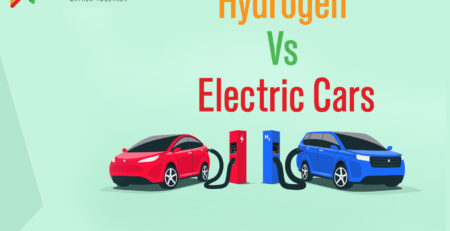Ola Electric Seeks Rs 1,200 Crore Private Credit for Strategic Refinancing Amid Market Expansion
Executive Summary
Ola Electric Mobility Limited, India’s leading electric two-wheeler manufacturer, has initiated discussions with banking partners to secure Rs 1,000-1,200 crore ($120-140 million) in private credit financing. This strategic move represents the Bengaluru-based company’s second significant fundraising initiative within twelve months of its public listing in August 2024, signaling the company’s commitment to optimizing its capital structure while maintaining aggressive expansion plans.
The fundraising effort comes at a critical juncture for the electric vehicle (EV) sector in India, where companies are balancing rapid growth opportunities with the need for sustainable financial management. Ola Electric’s decision to pursue private credit for refinancing existing bank loans demonstrates a mature approach to debt management, potentially improving interest costs and extending repayment schedules.
Understanding Ola Electric’s Current Financial Position
Recent Fundraising History
Ola Electric’s board has approved the plans to raise INR 1,700 Cr in one or multiple tranches through non-convertible debentures (NCDs) and other eligible debt securities. This earlier approval from May 2025 established the framework for the company’s ongoing capital-raising activities, positioning it to respond dynamically to market opportunities and operational requirements.
The company’s fundraising trajectory has been impressive, with Ola Electric raising a total of $1B over 14 funding rounds: 1 Seed, 4 Early-Stage, 5 Late-Stage and 4 Debt rounds. This diversified funding approach reflects the company’s evolution from a startup to a publicly-traded entity with sophisticated capital requirements.
Strategic Importance of Private Credit
Private credit markets have become increasingly attractive for growth-stage companies seeking flexible financing solutions. Unlike traditional bank loans, private credit offers several advantages including customized terms, faster execution, and potentially more favorable covenants. For Ola Electric, accessing private credit markets represents a strategic evolution in its funding approach, particularly as the company seeks to optimize its existing debt structure.
The refinancing component of this fundraise is particularly significant, as it suggests Ola Electric is proactively managing its debt obligations rather than simply seeking additional capital for expansion. This approach can lead to improved cash flow management, reduced interest expenses, and enhanced financial flexibility for future growth initiatives.
Market Context and Industry Dynamics
India’s Electric Vehicle Revolution
India’s electric vehicle market has experienced unprecedented growth, driven by government incentives, environmental concerns, and technological advancements. The two-wheeler segment, where Ola Electric operates, represents the largest opportunity within the Indian EV ecosystem due to the country’s massive motorcycle and scooter market.
Government initiatives such as the Faster Adoption and Manufacturing of Electric Vehicles (FAME) scheme and various state-level incentives have created a conducive environment for EV adoption. This regulatory support, combined with increasing consumer awareness about sustainable transportation, has positioned companies like Ola Electric at the forefront of India’s mobility transformation.
Competitive Landscape Analysis
The electric two-wheeler market in India has become increasingly competitive, with traditional automotive manufacturers and new-age startups vying for market share. Ola Electric’s need for continuous capital infusion reflects the capital-intensive nature of the EV business, where companies must simultaneously invest in manufacturing capacity, technology development, and market expansion.
Key competitors include Hero Electric, Bajaj Auto’s Chetak, TVS iQube, and Ather Energy, each with distinct strategies and funding approaches. Ola Electric’s focus on building integrated manufacturing capabilities, including its ambitious Gigafactory project, differentiates it from competitors who may rely more heavily on outsourced production.
Financial Strategy and Capital Structure Optimization
Debt Refinancing Benefits
The decision to pursue private credit for refinancing existing bank loans suggests several strategic considerations. First, current market conditions may offer more favorable interest rates or terms compared to when the original loans were secured. Second, private credit providers often offer more flexibility in terms of repayment schedules and covenants, which can be particularly valuable for growth-stage companies with evolving cash flow patterns.
Refinancing also provides an opportunity to consolidate multiple debt obligations into a single, more manageable structure. This can simplify financial management, reduce administrative costs, and potentially improve the company’s overall cost of capital. For investors and stakeholders, successful refinancing demonstrates management’s proactive approach to capital structure optimization.
Working Capital Management
The timing of this fundraising initiative is particularly noteworthy given the seasonal nature of the two-wheeler market and the ongoing expansion of Ola Electric’s manufacturing capabilities. Access to flexible credit facilities can help manage working capital requirements during periods of rapid growth, ensuring that production schedules and delivery commitments are met without compromising financial stability.
Private credit facilities often provide more responsive access to capital compared to traditional banking relationships, which can be crucial for companies operating in fast-moving markets. This agility in capital access can translate into competitive advantages in terms of inventory management, supplier relationships, and market responsiveness.
Manufacturing and Capacity Expansion
Gigafactory Development
Ola Electric’s ambitious Gigafactory project represents one of the most significant investments in India’s EV manufacturing infrastructure. The facility, located in Tamil Nadu, is designed to produce both electric vehicles and battery cells, creating a vertically integrated manufacturing ecosystem. This strategic approach reduces dependency on external suppliers while potentially improving cost competitiveness.
The capital requirements for such large-scale manufacturing projects are substantial and ongoing. Private credit facilities can provide the flexible financing needed to support various phases of capacity expansion, from initial construction to equipment procurement and working capital for scaled operations.
Technology Investment and R&D
The electric vehicle industry is characterized by rapid technological evolution, requiring continuous investment in research and development. Ola Electric’s commitment to innovation is evident in its integrated approach to EV development, including in-house battery technology, software platforms, and manufacturing processes.
Access to flexible credit facilities enables the company to maintain its technology development pace while managing cash flow requirements. This is particularly important given the competitive nature of the EV market, where technological advantages can quickly translate into market share gains or losses.
Market Expansion and Distribution Strategy
Geographic Expansion
Ola Electric’s growth strategy involves expanding its presence across India’s diverse geographic markets, each with unique characteristics and requirements. This expansion requires significant investment in distribution infrastructure, service networks, and market-specific customization.
Private credit facilities can provide the working capital needed to support rapid geographic expansion while maintaining service quality standards. The flexibility inherent in private credit arrangements allows companies to scale their operations dynamically based on market response and opportunities.
Customer Acquisition and Retention
The consumer EV market requires substantial investment in customer acquisition, including marketing campaigns, dealer incentives, and customer service infrastructure. Additionally, the relatively nascent nature of the electric two-wheeler market means that customer education and support are crucial for long-term success.
Flexible credit facilities enable companies to invest in customer acquisition strategies while maintaining financial stability. This is particularly important in the EV market, where customer satisfaction and brand reputation can significantly impact long-term success.
Risk Management and Financial Prudence
Operational Risk Mitigation
The electric vehicle industry faces several operational risks, including supply chain disruptions, regulatory changes, and technology obsolescence. Maintaining access to flexible credit facilities provides a buffer against these risks, enabling companies to respond quickly to unexpected challenges.
Ola Electric’s approach to refinancing existing debt suggests a proactive risk management strategy, where the company seeks to optimize its financial position during favorable market conditions rather than waiting for potential stress situations.
Market Volatility Management
The EV market, while growing rapidly, remains subject to various external factors including government policy changes, raw material price fluctuations, and consumer sentiment shifts. Having access to diverse funding sources, including private credit, provides companies with the flexibility to navigate market volatility effectively.
The refinancing component of Ola Electric’s current fundraising initiative demonstrates management’s awareness of market dynamics and commitment to maintaining financial flexibility across different market conditions.
Future Growth Prospects and Strategic Implications
Scaling Production Capacity
As demand for electric two-wheelers continues to grow, Ola Electric’s ability to scale production capacity efficiently will be crucial for maintaining market leadership. The company’s integrated manufacturing approach, supported by flexible financing arrangements, positions it well to capture market opportunities as they emerge.
The private credit facility being pursued can support various aspects of production scaling, from additional equipment procurement to increased working capital requirements associated with higher production volumes.
Product Portfolio Expansion
Ola Electric’s long-term strategy likely includes expanding its product portfolio beyond its current scooter offerings. This expansion could include different vehicle categories, battery technologies, or mobility services. Access to flexible credit facilities provides the financial foundation needed to support such strategic diversification.
The company’s demonstrated ability to access various funding sources, including equity, debt, and now private credit, suggests a sophisticated approach to financing growth initiatives across different business segments.
International Expansion Opportunities
While currently focused on the Indian market, Ola Electric’s manufacturing capabilities and technology platform could support international expansion opportunities. Several emerging markets share similar characteristics to India in terms of two-wheeler market size and electrification potential.
Private credit facilities can provide the working capital needed to support international expansion while maintaining domestic growth momentum. The flexibility inherent in such arrangements allows companies to pursue multiple growth opportunities simultaneously.
Conclusion and Strategic Outlook
Ola Electric’s pursuit of Rs 1,000-1,200 crore in private credit for refinancing existing bank loans represents a strategic evolution in the company’s financial management approach. This initiative demonstrates management’s proactive stance toward capital structure optimization while maintaining the flexibility needed to pursue aggressive growth strategies.
The broader implications of this fundraising effort extend beyond immediate financial benefits. By accessing private credit markets, Ola Electric is diversifying its funding sources, potentially reducing its cost of capital, and establishing relationships with alternative credit providers. This diversification strengthens the company’s financial foundation while providing greater flexibility for future growth initiatives.
The success of this fundraising effort will likely influence other companies in the Indian EV ecosystem, potentially accelerating the adoption of private credit solutions among growth-stage companies. As the electric vehicle market continues to evolve, access to flexible and efficient funding mechanisms will become increasingly important for maintaining competitive positioning.
For investors and industry observers, Ola Electric’s funding strategy provides insights into the maturing Indian EV market, where companies are transitioning from pure growth-focused strategies to more balanced approaches that emphasize both expansion and financial sustainability. This evolution reflects the industry’s progression toward long-term viability and sustainable growth.
The coming months will be crucial for determining the success of this fundraising initiative and its impact on Ola Electric’s competitive position. The company’s ability to successfully refinance its existing debt while maintaining growth momentum will serve as a benchmark for other companies navigating similar strategic transitions in the dynamic Indian EV market.









